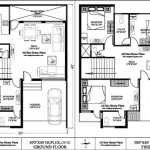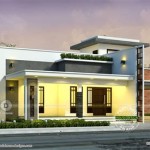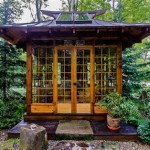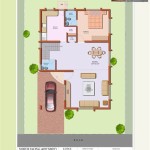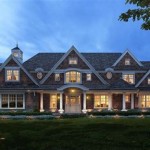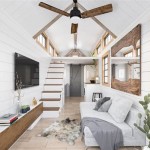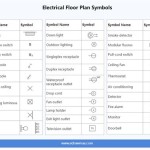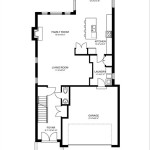Traditional Ranch Style House Plans: A Comprehensive Overview
Traditional Ranch style house plans represent a significant period in American architectural history, particularly popular from the 1930s to the 1970s. These homes, characterized by their single-story layout and emphasis on practicality, offered a solution to the post-war housing boom. Their enduring appeal lies in their simplicity, adaptability, and connection to the surrounding landscape. Understanding the core elements of traditional Ranch designs is crucial for those considering building or renovating a home in this style.
This article will delve into the key characteristics of Traditional Ranch style house plans, examining their historical context, defining features, and variations. It will also explore the common interior layouts, materials used, and how these designs can be adapted for modern living while preserving the original aesthetic.
Key Characteristics of Traditional Ranch House Plans
The defining features of a Traditional Ranch house plan are rooted in its functionality and affordability. The style emerged as a response to the need for efficient and spacious housing, particularly in suburban areas. Several characteristics distinguish this architectural form:
Single-Story Layout: Perhaps the most recognizable feature of a Ranch house is its single-story construction. This design promotes accessibility and ease of living, making it suitable for families with young children, elderly individuals, or those with mobility limitations. The horizontal orientation is emphasized, creating a low-profile silhouette against the landscape.
Low-Pitched Roof: A low-pitched roofline contributes to the Ranch house's understated appearance and enhances its horizontal emphasis. The shallow roof slope allows for easier maintenance and contributes to the overall cost-effectiveness of construction. Overhanging eaves are common, providing shade and protection from the elements.
Open Floor Plan: While early Ranch homes might have had slightly more defined spaces, the concept of an open floor plan began to emerge as a key characteristic. Kitchens, dining rooms, and living rooms often flow seamlessly into one another, promoting a sense of spaciousness and facilitating social interaction. This design element reflects the changing lifestyles of the mid-20th century, where informal gatherings and family time became increasingly valued.
Attached Garage: The inclusion of an attached garage became a standard feature in Ranch homes, reflecting the growing reliance on automobiles for transportation. The garage often provides direct access to the house, enhancing convenience and security. It also contributes to the overall symmetry and balance of the façade.
Large Windows: Expansive windows are common in Ranch homes, designed to maximize natural light and provide views of the surrounding landscape. Sliding glass doors often connect the interior spaces to patios or backyard areas, blurring the boundaries between indoors and outdoors. This characteristic reflects a desire to integrate living spaces with the natural environment.
Simple Exterior Details: Traditional Ranch homes typically feature simple exterior details, such as horizontal siding, brick accents, and minimal ornamentation. Emphasis is placed on clean lines and functional design. The focus is on creating a practical and comfortable living space rather than elaborate architectural embellishments.
Variations of Traditional Ranch Style
While the core characteristics of the Ranch style remain consistent, several variations emerged over time, reflecting regional preferences and evolving design trends. Understanding these variations can help in identifying and appreciating the nuances of different Ranch house plans:
California Ranch: Often considered the original and most iconic type of Ranch house, the California Ranch emphasizes indoor-outdoor living with large windows, sliding glass doors, and extensive patios. The design often incorporates natural materials such as wood and stone, reflecting the relaxed and informal lifestyle of the West Coast.
Suburban Ranch: The Suburban Ranch, popular in the post-war housing boom, typically features a more compact layout and simpler detailing than the California Ranch. These homes were designed for affordability and efficiency, often built in large tract developments. They often feature a symmetrical façade, a central front door, and an attached garage.
Split-Level Ranch: The Split-Level Ranch is a variation that incorporates multiple levels connected by short flights of stairs. This design was often used on sloping lots to maximize space and provide distinct zones for living, sleeping, and recreation. While not strictly a single-story design, it retains many of the characteristics of the Ranch style, such as a low-pitched roof and attached garage.
Raised Ranch: Similar to the Split-Level Ranch, the Raised Ranch features two levels, but the lower level is typically partially below ground. The main living areas are located on the upper level, while the lower level often houses a garage, recreation room, or additional bedrooms. This design allows for more efficient use of space on smaller lots.
Contemporary Ranch: Contemporary Ranch designs incorporate modern materials and design elements while retaining the essential characteristics of the Ranch style. These homes often feature open floor plans, energy-efficient windows, and sustainable building materials. They represent a contemporary interpretation of the traditional Ranch aesthetic.
Interior Layouts and Materials
The interior layout of a Traditional Ranch house plan is typically designed for efficiency and comfort. Open floor plans, while not always present in the earliest examples, became increasingly common, promoting a sense of spaciousness and facilitating social interaction. Common interior elements include:
Living Room: The living room is typically located at the front of the house, often featuring a large picture window that provides views of the street. It serves as a central gathering space for family and friends.
Kitchen and Dining Area: The kitchen and dining area are often integrated into an open floor plan, creating a seamless flow between cooking, eating, and socializing. Kitchens often feature simple cabinetry, durable countertops, and efficient appliances.
Bedrooms and Bathrooms: Bedrooms are typically located in a separate wing of the house, providing privacy and quiet. Bathrooms are often located near the bedrooms, featuring functional layouts and durable materials.
Hallways: Hallways are typically kept to a minimum, maximizing the use of space and creating a more open and airy feel.
Materials: Traditional Ranch homes are typically built with durable and affordable materials. Common materials include:
Wood: Wood is used extensively for framing, siding, and interior finishes. Horizontal wood siding is a characteristic feature of many Ranch homes.
Brick: Brick is often used for accents, such as fireplace surrounds, foundation walls, and exterior detailing. It provides a durable and low-maintenance finish.
Concrete: Concrete is used for foundations, slabs, and patios. It provides a strong and stable base for the house.
Asphalt Shingles: Asphalt shingles are a common roofing material, offering affordability and durability.
Plywood and Gypsum Board: Plywood and gypsum board are used for interior wall and ceiling finishes, providing a smooth and paintable surface.
The material palette of a Traditional Ranch house is typically simple and understated, reflecting the emphasis on practicality and affordability.
Adapting Traditional Ranch House Plans for Modern Living
While Traditional Ranch homes offer undeniable charm and historical significance, they may require adaptation to meet the needs of modern living. Several strategies can be employed to update and modernize a Ranch house while preserving its original character:
Enhancing Energy Efficiency: Improving energy efficiency is a crucial aspect of modernizing a Ranch house. This can be achieved through the installation of energy-efficient windows, insulation, and HVAC systems. Solar panels can also be added to reduce energy consumption and promote sustainability.
Updating the Kitchen and Bathrooms: Kitchens and bathrooms are often the first areas to be updated in a Ranch house. Modernizing these spaces can involve installing new cabinetry, countertops, appliances, and fixtures. Maintaining the original layout and style can help preserve the character of the house.
Expanding the Living Space: If more living space is needed, consider adding an addition to the back or side of the house. Keeping the addition in the same style as the original house will help maintain its architectural integrity. Alternatively, converting an attached garage into living space can provide additional square footage without significantly altering the exterior appearance.
Improving Accessibility: Ranch homes are inherently accessible due to their single-story layout. However, further improvements can be made to enhance accessibility for individuals with mobility limitations. This can include widening doorways, installing grab bars in bathrooms, and adding ramps for wheelchair access.
Landscaping: Landscaping can play a significant role in enhancing the curb appeal of a Ranch house. Planting native trees and shrubs, creating a well-manicured lawn, and adding a patio or deck can transform the outdoor spaces into inviting and functional areas. The landscaping should complement the architectural style of the house, creating a cohesive and harmonious design.
By carefully considering these adaptation strategies, it is possible to modernize a Traditional Ranch house while preserving its original charm and character. The result is a comfortable, functional, and stylish home that reflects the best of both the past and the present.

Traditional Ranch Style Home Plan 89130ah Architectural Designs House Plans

Traditional Style House Plan 4 Beds 2 Baths 1880 Sq Ft 17 1093 Bedroom Plans Floor Ranch

Traditional Ranch From America S Choice House Plans The Designers

Ranch House Plans Style Home Designs The Designers

Can A Raised Ranch Home Become Traditional House Plans Remodel Designs

Ranch House Plans Traditional Floor
:max_bytes(150000):strip_icc()/rx_1910_sl578-8f2e9a0630db47ee9a44bedd0c203993.jpg?strip=all)
20 Ranch House Plans That Will Never Go Out Of Style

Ranch House Plans Style Home Designs The Designers

Plan 60105 3 Bed 2 Bath Traditional House With 1600 Sq Ft

Plan 51983 Ranch Style Home Floor With 3044 Sq Ft 4

